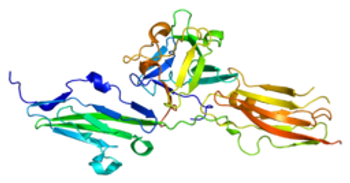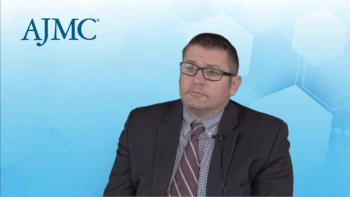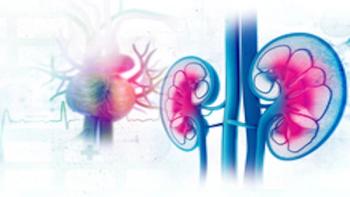
Racial and ethnic health disparities are documented and substantial, but the data are out there to create programs that successfully address these disparities, said panelists.

Racial and ethnic health disparities are documented and substantial, but the data are out there to create programs that successfully address these disparities, said panelists.

A study conducted in China found that infants whose mother has depression, anxiety, or a sleep disorder are more likely to have sleep disorders themselves.

A new FAIR Health white paper containing the fifth annual edition of FH Healthcare Indicators and FH Medical Price Index was released, showing a dramatic increase in telehealth utilization from 2019 to 2020.

Development of FGFR inhibitors, which target fibroblast growth factor receptors, is among the most important advances in the treatment of cholangiocarcinoma.

Two studies presented at the annual meeting of the American College of Cardiology show the safety and effectiveness of regular coffee consumption in regard to cardiovascular disease and heart disease, as well as mortality.

Michael Ciarametaro, MBA, vice president of research at the National Pharmaceutical Council, discusses the balance between lowering drug prices and encouraging innovation in new drug classes for serious diseases.

Longer drug survival was associated with interleukin-17 (IL-17) inhibitors vs tumor necrosis factor (TNF) inhibitors in the treatment of psoriasis and psoriatic arthritis, but persistence rates for first-line biologics overall remained low.

A 6-month chronic obstructive pulmonary disease (COPD) care management collaborative helped reduce COPD-related revisits and save hospitals money.

UnitedHealth Group will buy LHC Group for $5.4 billion as part of its home health care expansion plan; the FDA approved a second COVID-19 booster dose for adults aged 50 and older; a study found differing patterns of clinic and emergency department acute-care use between White, Black, and Latino or Hispanic children with asthma.

A literature review pointed out the limited current research that has been conducted on how to manage pruritus in patients with chronic kidney disease (CKD) treated with hemodialysis, suggesting that more data is needed to improve symptom burden in these patients.

The American College of Cardiology will host its annual conference beginning Friday, April 1, 2022, both in-person and online.

Relapse remains a daunting reality in multiple myeloma, but clinicians have more tools to work with to fight the disease.

A new review article shows diabetes and hypertension are linked with arrhythmia and chronic kidney disease (CKD), but several other less common causes also exist.

The authors say delivering FOLFOX via transarterial infusion could be a “perfect option for treating intrahepatic cholangiocarcinoma before patients receive targeted therapy, immunotherapy, or radiotherapy.

The COVID-19 pandemic has affected the mental health of health care workers as well as the general population, creating a significant impact on sleep quality.

President Biden releases the budget for fiscal year 2023; health care spending is projected to hit $6.8 trillion in 2030; rates of prediabetes on the rise in children.

In this new study from Norway, artificial intelligence (AI) was used with mammography screenings to predict risk of breast cancer in women vs double reading of mammographic screening by independent radiologists.

The 5-year survival rate over the time period was just 33.8%, the study found.

A Monday session at the 2022 American Academy of Dermatology Annual Meeting discussed strategies for risk stratification and therapeutic management of nonmelanoma skin cancers.

A recent study found that men and patients with disciform scars on their eyes have a greater risk of developing submacular hemorrhage (SMH), a rare complication in the eyes.

Jonathan Kentley, MBBS, MSc, research fellow at Memorial Sloan Kettering Cancer Center, explains ways artificial intelligence (AI) is being used in dermatology, including smartphone applications, at the 2022 American Academy of Dermatology Annual Meeting.

Posters from the American Society of Clinical Oncology Genitourinary Cancers Symposium (ASCO GU) 2022 look at how the tumor genomic landscape differs based on age and type of urothelial carcinoma.

New research found Medicaid expansion was associated with lower rates of diabetic limb amputations among racial minorities in the United States.

Bernice Kwong, MD, clinical professor of dermatology, Stanford University, expands on her session about graft-versus-host disease diagnosis and management presented at the 2022 American Academy of Dermatology Annual Meeting, emphasizing the importance of the relationship between patients and doctors.

The FDA approved a drug to treat a rare form of childhood epilepsy; uninsured Americans will no longer have access to free COVID-19 tests; a conservation group is suing the Environmental Protection Agency (EPA) over failure to protect rivers from pollution.

Clinical trial recruitment and management strategies for diverse populations are among the challenges that affect dermatology care quality and access, according to panelists at the 2022 American Academy of Dermatology (AAD) Annual Meeting.

A new study has found that internalized skin bias has a role in diminishing HRQOL and negatively affects mental health among these patients.

Retrospective study findings show that CD47 expression on Hodgkin and Reed–Sternberg (HRS) cells varied between patients who had classical Hodgkin lymphoma (HL) and was associated with poor outcomes.

Panelists reviewed the latest advancements in clinical testing for melanoma, targeted therapy implications, and strategies for patient selection at a session on genetic and molecular testing at the 2022 American Academy of Dermatology (AAD) Annual Meeting.

David Rosmarin, MD, vice chair of research and education, Department of Dermatology, Tufts Medical Center, discusses best practices for choosing biologics, as well as his late-breaking findings on ruxolitinib cream for vitiligo at the 2022 American Academy of Dermatology (AAD) Annual Meeting.

259 Prospect Plains Rd, Bldg H
Cranbury, NJ 08512
© 2025 MJH Life Sciences®
All rights reserved.
